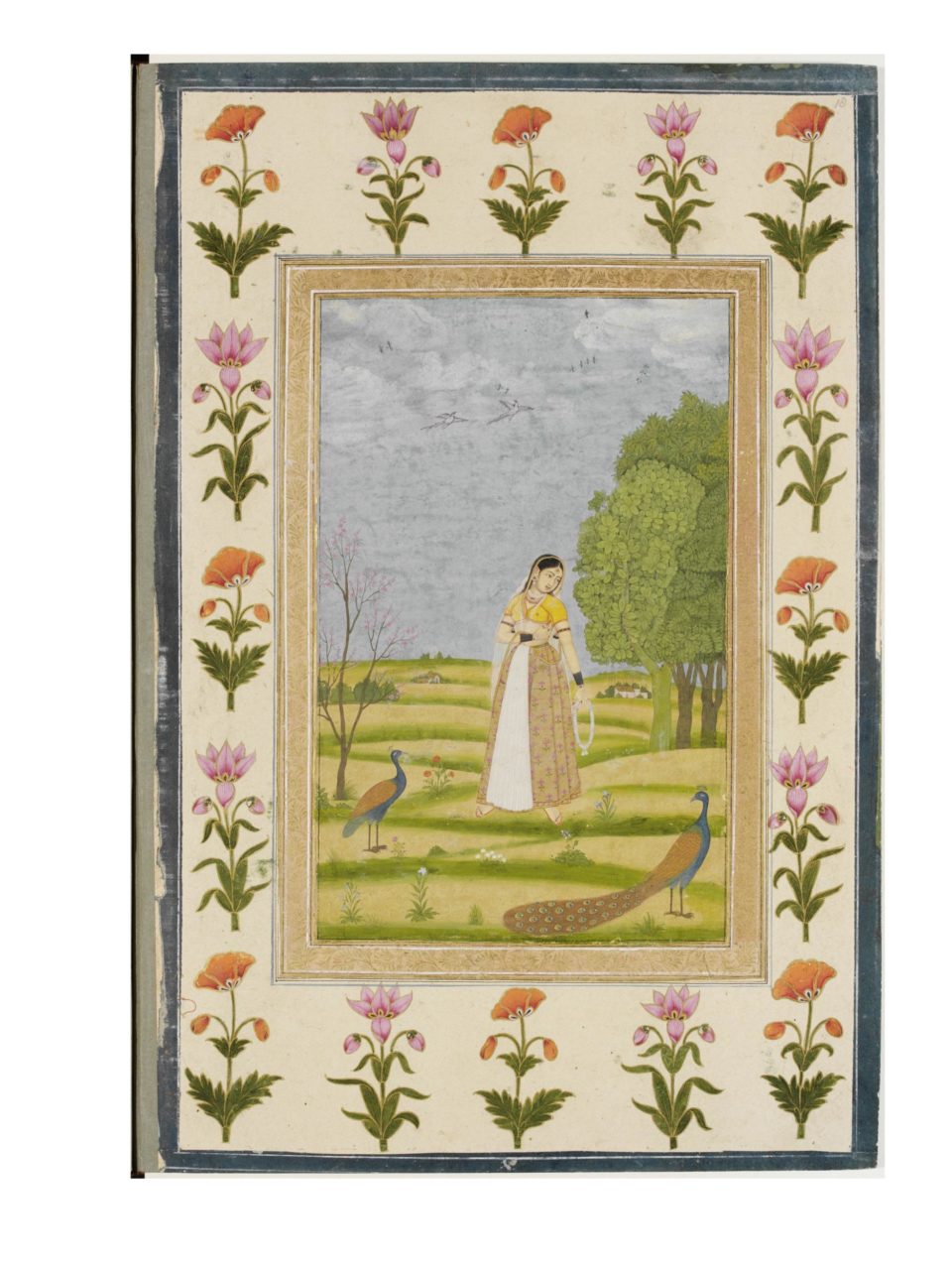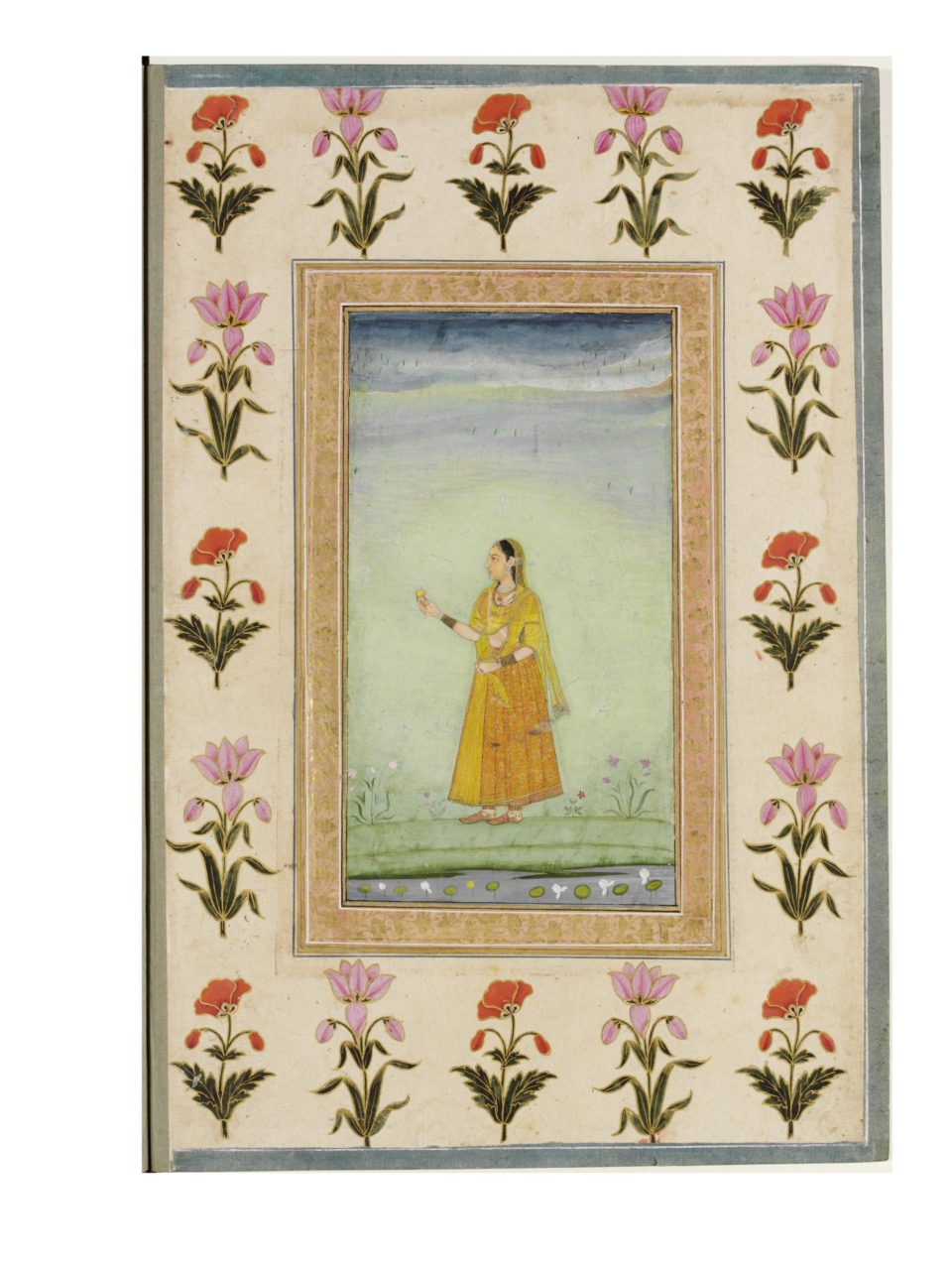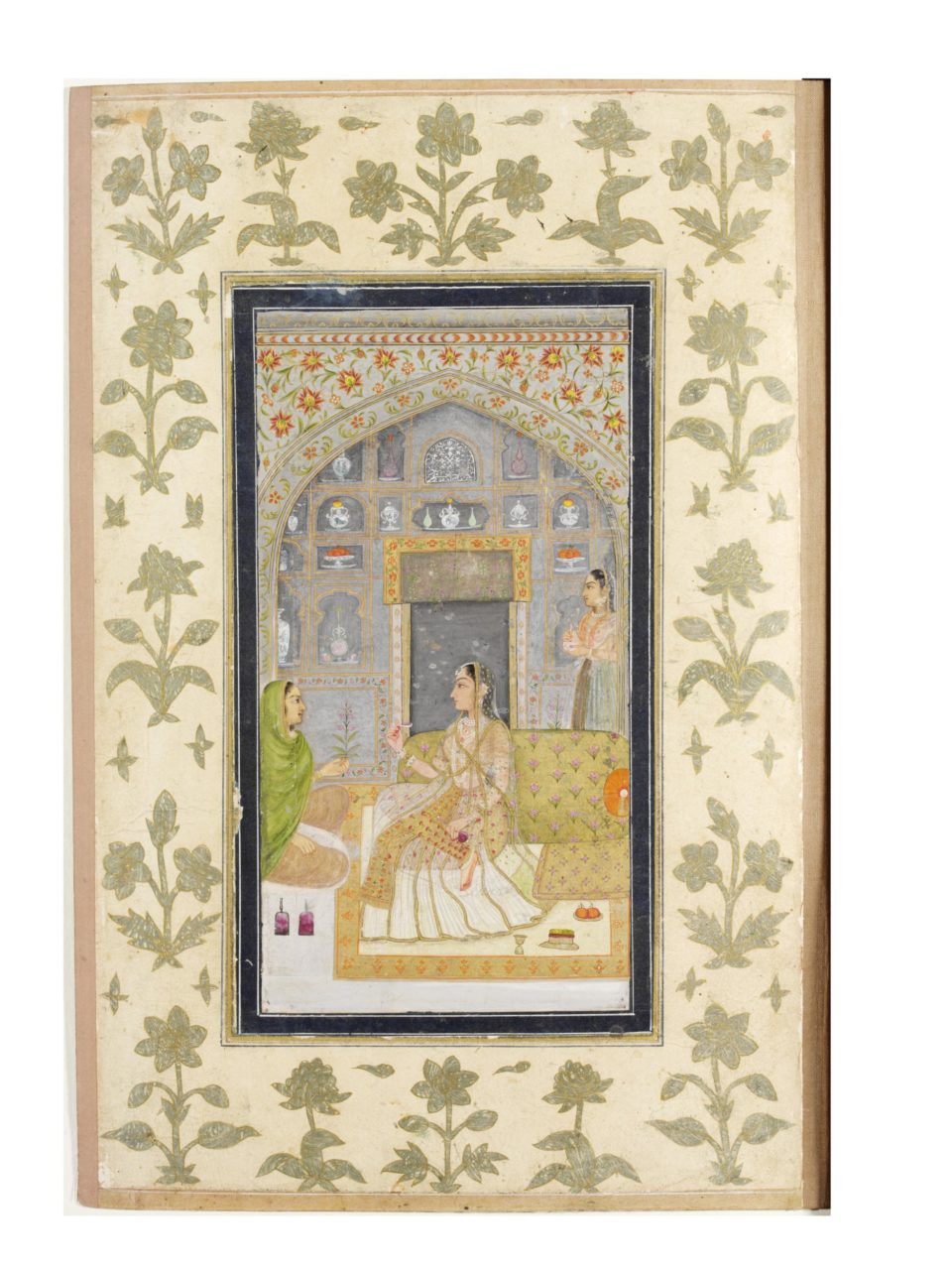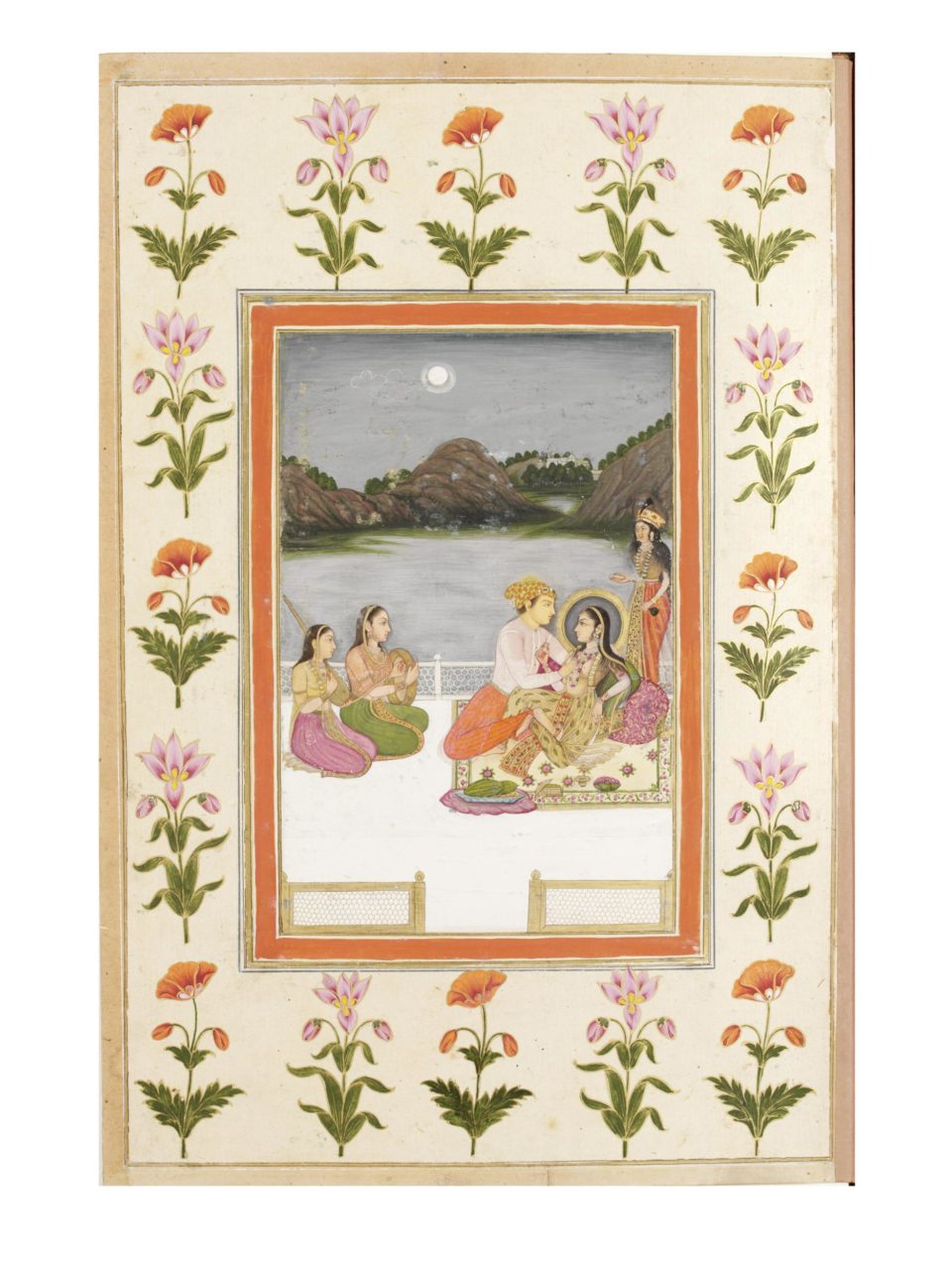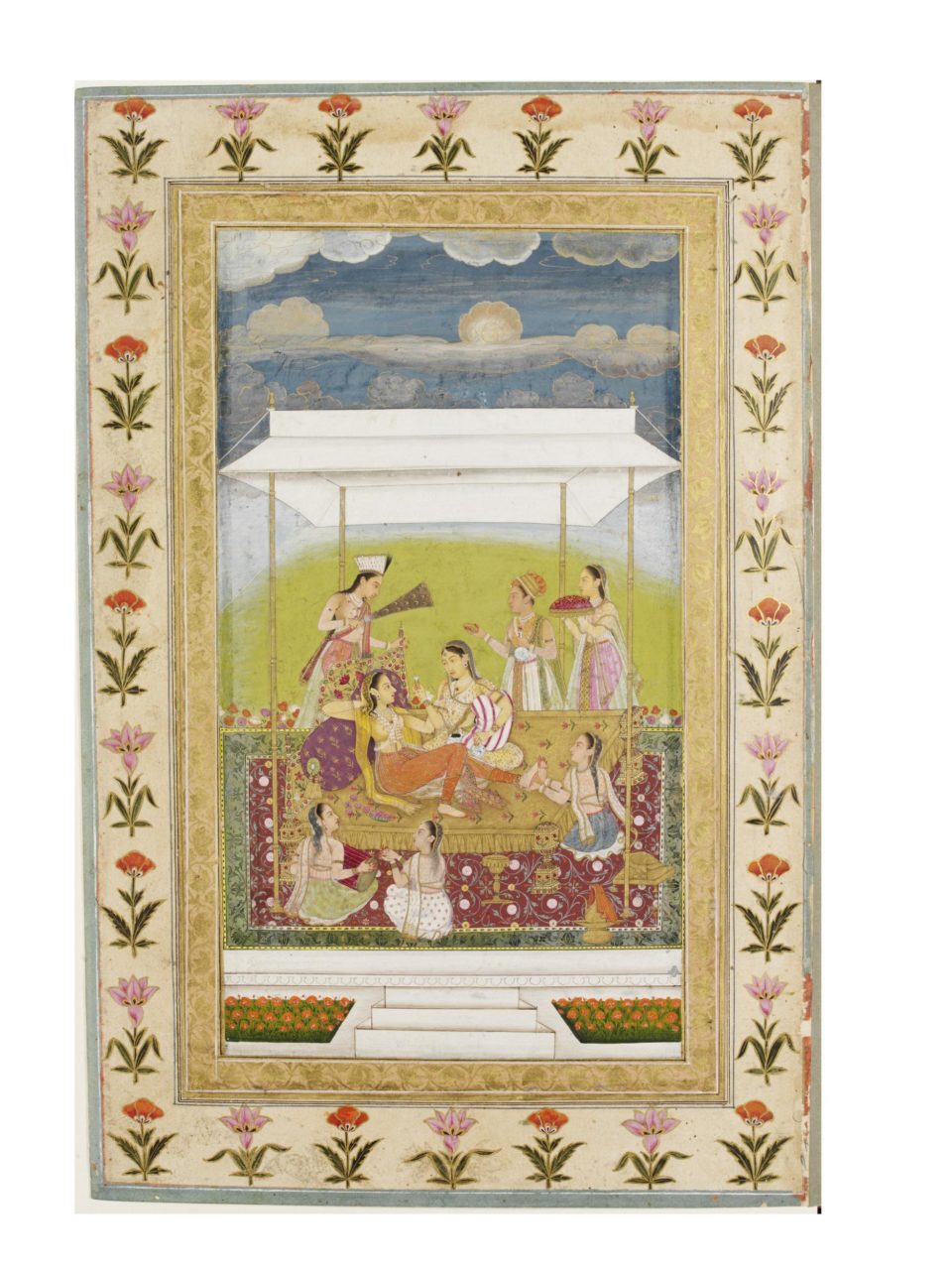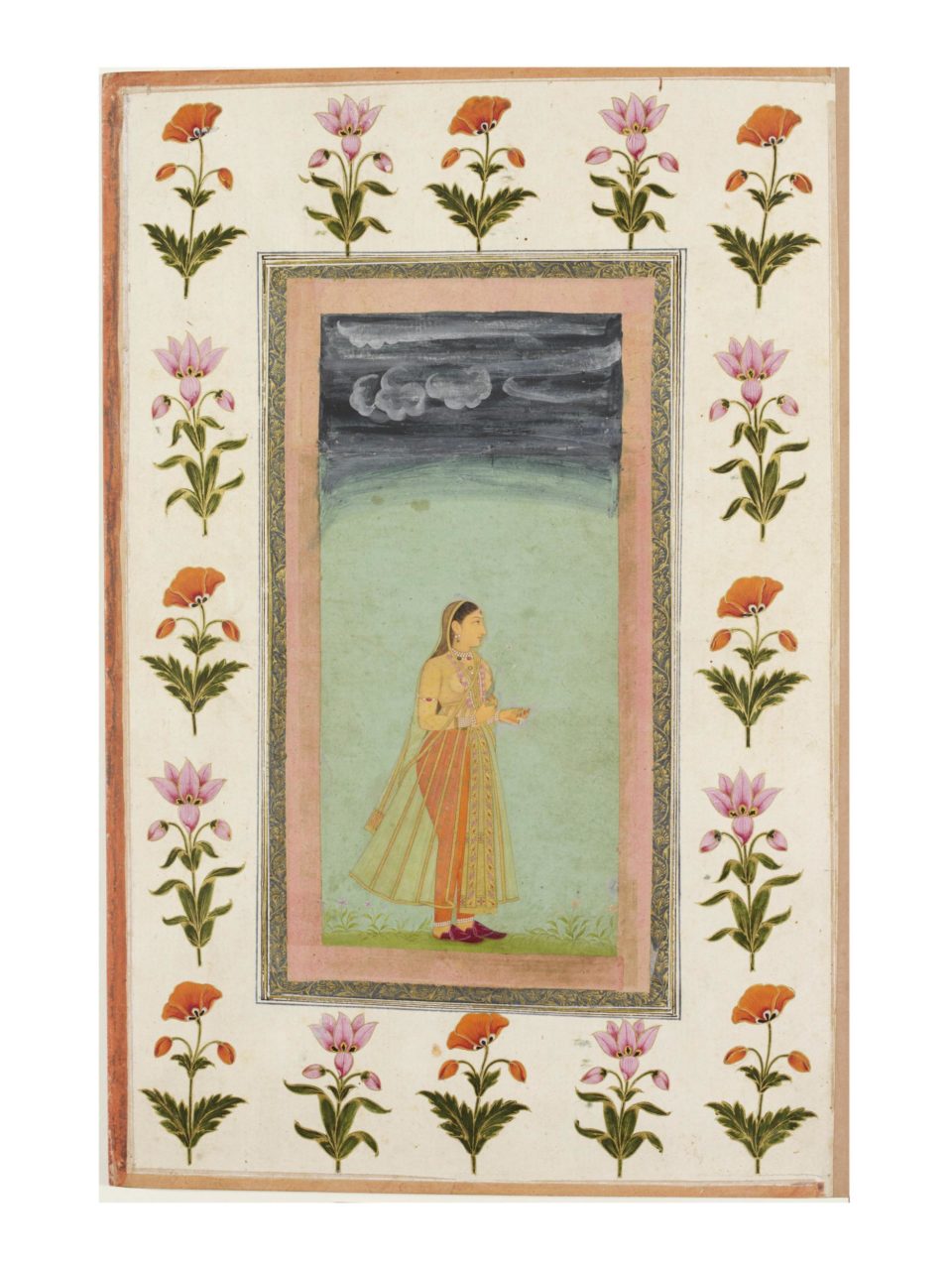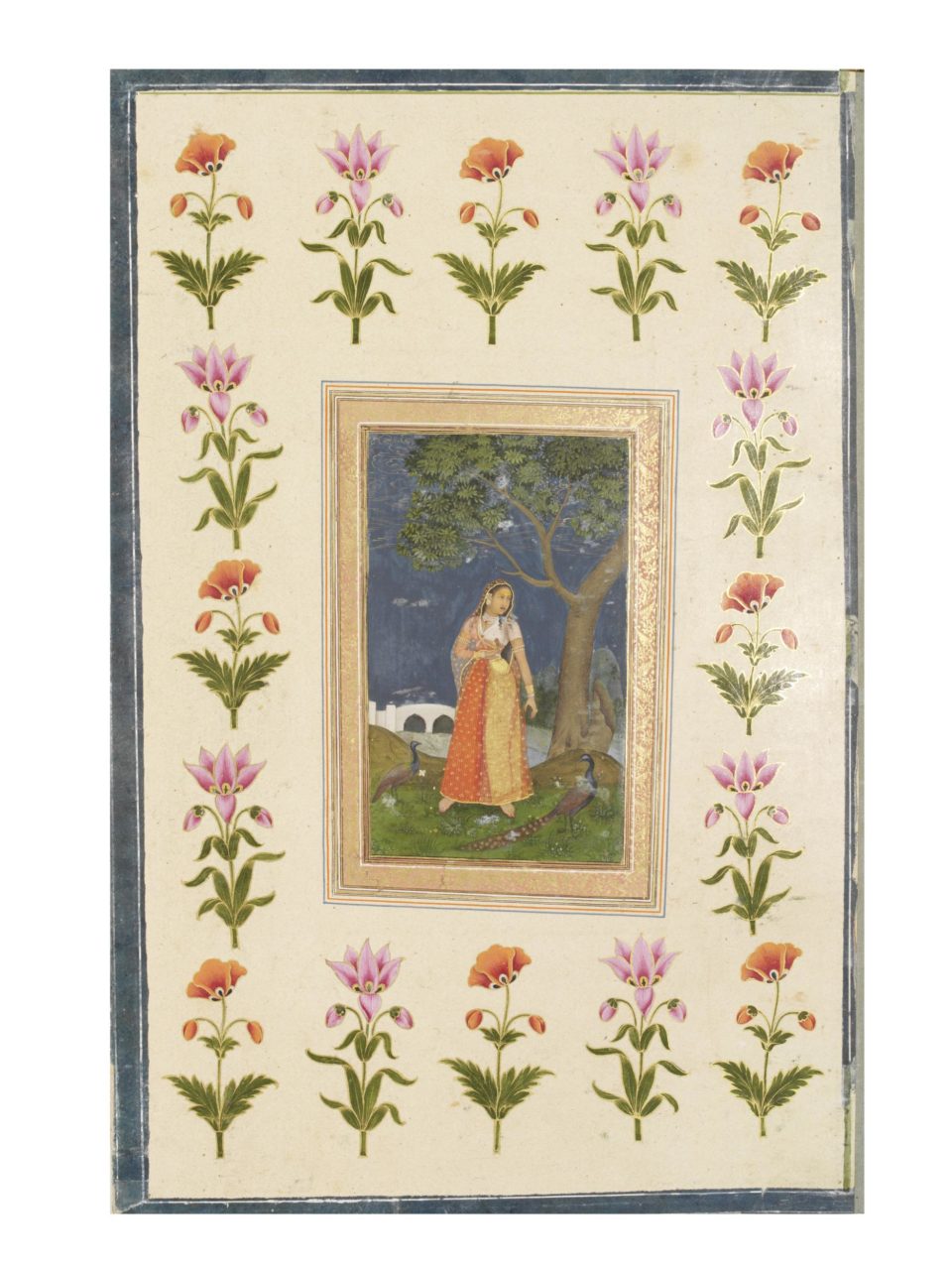It was Delhi-based textile and art expert, Alka Raghuvanshi who put the thought in my head.
Chanderi in Mughal Miniatures?
 “If you look at old miniature Mughal paintings, the diaphanous skirt and veil looks like a Chanderi fabric,” she said. “As we all know, the best Chanderi fabrics are nearly transparent. You put them in a bucket of water and they disappear.”
“If you look at old miniature Mughal paintings, the diaphanous skirt and veil looks like a Chanderi fabric,” she said. “As we all know, the best Chanderi fabrics are nearly transparent. You put them in a bucket of water and they disappear.”
It is a lovely image. Imagine soaking your Chanderi saree into a bucket of water and watching it dissolve under your very eyes.
Many Mughal miniatures feature such translucent fabrics. They are believed to be muslin. But here is a thought: Could these translucent fabrics in the Mughal miniatures be heritage Chanderi weaves?
Have a look at this images from the Victoria & Albert Museum’s collections and make up your own mind.
From Kashmir to Kolikhanda Cotton
Agar Firdaus bar ru-e-zamin ast, hami ast o- hami ast o- hami ast.”
“If there is heaven on earth, it is here, it is here, it is here”
Emperor Jahangir
Now, here is the thing. Jahangir waxed poetic about his beloved Kashmir, but if there is one thread (no pun intended) that permeated all of the famous Mughal miniatures that he commissioned and patronized, it wasn’t the lakes and valleys of Kashmir but gossamer translucent weaves that resemble the Chanderi sarees of this edition.
“Chanderi sarees are really the clothing of royalty,” says Alka. “It is a glamourous royal weave.”
Lots of weavers concur. As S.K. Somani-ji of Gopilal & Sons says, the royals from several parts of North India commissioned and bought Chanderi sarees for their functions. The Scindias of Madhya Pradesh continue to do so till this day.
Part of the reason for these “woven air” textiles is the high-quality extra-fine yarns that crucially, don’t go through the degumming process that is traditionally done to prevent breakage during weaving. Since Chanderi yarn is not degummed, it retains its lustre and texture.
For the wearer, heaven on earth indeed.


